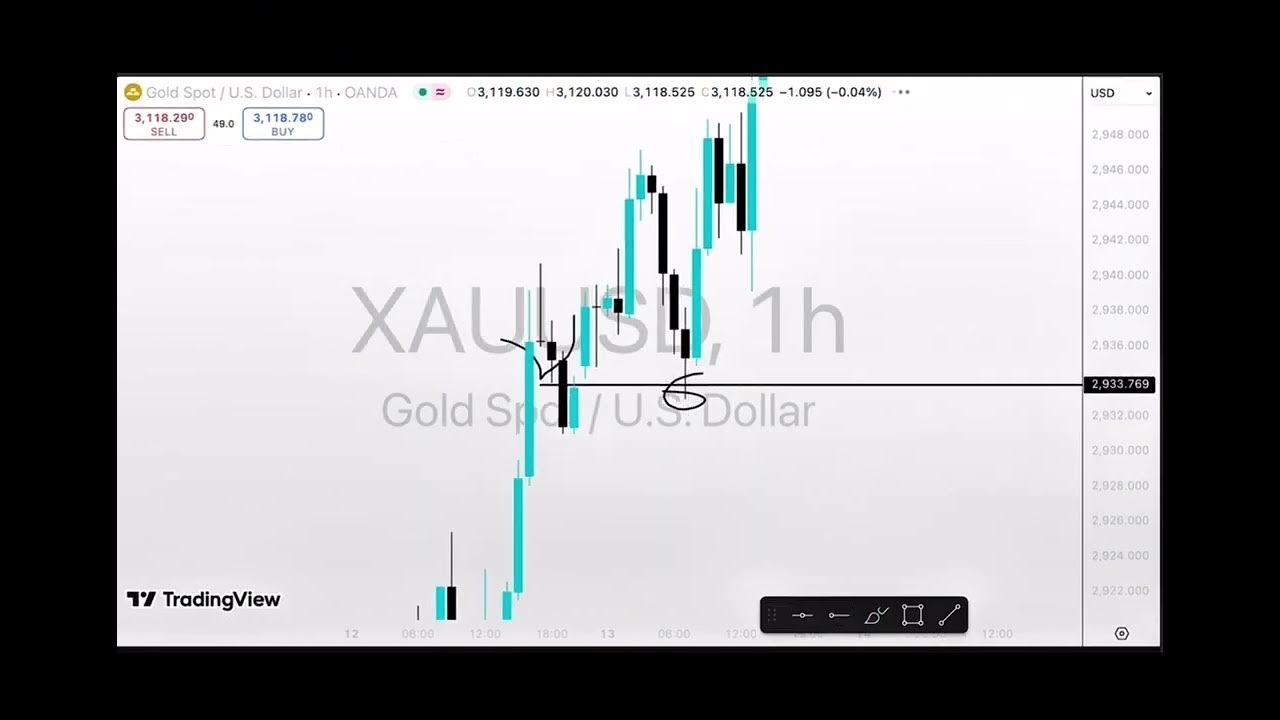How To Improve Day Trading Entries (Timeframe Alignment)
Summary
TLDRThis video script delves into the concept of multiple time frame analysis in trading, which significantly enhances the probability of successful trades. The speaker emphasizes the importance of aligning multiple time frames to identify trends and momentum, akin to betting on the winning team in a basketball game's final moments. They discuss using moving averages to quickly gauge trends and highlight the significance of waiting for time frame alignment before entering trades. The script provides practical examples of how to apply this strategy for both intraday and swing trades, illustrating how it can help traders avoid unnecessary risks and manage their trades more effectively.
Takeaways
- 📈 Multiple Time Frame Analysis is a trading technique that involves analyzing charts on more than one time frame to increase the probability of successful trades.
- 🔍 Before entering a trade, the speaker checks both higher and lower time frames to ensure there's no conflict that could affect the trade negatively.
- 🌟 The concept of 'time frame alignment' is crucial; the speaker looks for multiple time frames to all indicate the same directional bias for a stronger trade setup.
- 🏊♂️ A common saying in trading is 'it's easier to swim with the current than against it,' which translates to trading with the trend rather than against it.
- 📊 The speaker uses specific time frames for intraday trading (1, 2, 5, 15-minute, and hourly) and larger time frames (daily, weekly, monthly) for analyzing stocks.
- 🛠 The speaker relies on moving averages, particularly the 20-period and 200-period moving averages, to identify trends and time entries.
- ⏰ Patience is key; the speaker waits for a secondary entry when time frames align, which can provide a better momentum and increase the chances of a successful trade.
- 📉 The speaker avoids trades where there's a conflict between time frames, as it can lead to a 'tug of war' that may result in unnecessary losses.
- ⏫ Time frame alignment aids in trade management by providing early signals if the trade starts to fail, allowing for better decision-making on when to exit or adjust positions.
- 🚫 Despite time frame alignment, there are no guarantees in trading, and the speaker acknowledges that some trades may not work out even with a well-aligned setup.
Q & A
What is the main concept discussed in the video script?
-The main concept discussed is 'multiple time frame analysis' in trading, which involves analyzing charts on more than one time frame to increase the probability of successful trades.
Why is multiple time frame analysis important in trading?
-Multiple time frame analysis is important because it helps align trades with the momentum of the market, making it easier to 'swim with the current' rather than against it, thus increasing the likelihood of a profitable trade.
What does the speaker mean by 'time frame alignment'?
-The speaker refers to 'time frame alignment' as the situation where multiple time frames all indicate the same directional bias, which provides more confirmation and momentum for a trade in that direction.
Which time frames does the speaker typically use for intraday trading?
-The speaker uses the 1-minute, 2-minute, 5-minute, 15-minute, and hourly time frames for intraday trading.
How does the speaker use moving averages in their trading strategy?
-The speaker uses the 20-period moving average (blue line) to quickly identify the trend direction and the 200-period moving average (orange line) for broader trend analysis. An uptrend is indicated when the 20-period moving average is moving upwards with candles trading above it, and a downtrend is indicated when the 20-period moving average is moving downwards with candles trading below it.
What is the significance of the 20-period moving average in the speaker's strategy?
-The 20-period moving average is significant because it helps the speaker to quickly determine the current trend direction, which in turn influences the type of trading setups they look for and the timing of their entries.
Why does the speaker wait for a secondary entry in some cases?
-The speaker waits for a secondary entry when there is a conflict between time frames, allowing the market to resolve the conflict and achieve time frame alignment before entering a trade, which can provide a better risk-reward setup.
How does time frame alignment help with trade management?
-Time frame alignment helps with trade management by providing early signals of a trade's potential failure, allowing the trader to adjust their stop losses and manage their positions more effectively.
What does the speaker mean when they say 'let Mommy and Daddy fight it out'?
-This is a metaphorical expression used by the speaker to describe waiting for conflicting time frames to resolve their differences before making a trade, ensuring that the trader enters a trade only when there is agreement among the time frames in the desired direction.
Why might the speaker pass on a trade even if there is a buy setup on a certain time frame?
-The speaker might pass on a trade if there is a buy setup on a certain time frame but the lower time frame is in a conflicting downtrend, as this could indicate a tug of war between the time frames, leading to a higher risk of loss.
Outlines

Dieser Bereich ist nur für Premium-Benutzer verfügbar. Bitte führen Sie ein Upgrade durch, um auf diesen Abschnitt zuzugreifen.
Upgrade durchführenMindmap

Dieser Bereich ist nur für Premium-Benutzer verfügbar. Bitte führen Sie ein Upgrade durch, um auf diesen Abschnitt zuzugreifen.
Upgrade durchführenKeywords

Dieser Bereich ist nur für Premium-Benutzer verfügbar. Bitte führen Sie ein Upgrade durch, um auf diesen Abschnitt zuzugreifen.
Upgrade durchführenHighlights

Dieser Bereich ist nur für Premium-Benutzer verfügbar. Bitte führen Sie ein Upgrade durch, um auf diesen Abschnitt zuzugreifen.
Upgrade durchführenTranscripts

Dieser Bereich ist nur für Premium-Benutzer verfügbar. Bitte führen Sie ein Upgrade durch, um auf diesen Abschnitt zuzugreifen.
Upgrade durchführen5.0 / 5 (0 votes)






